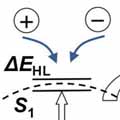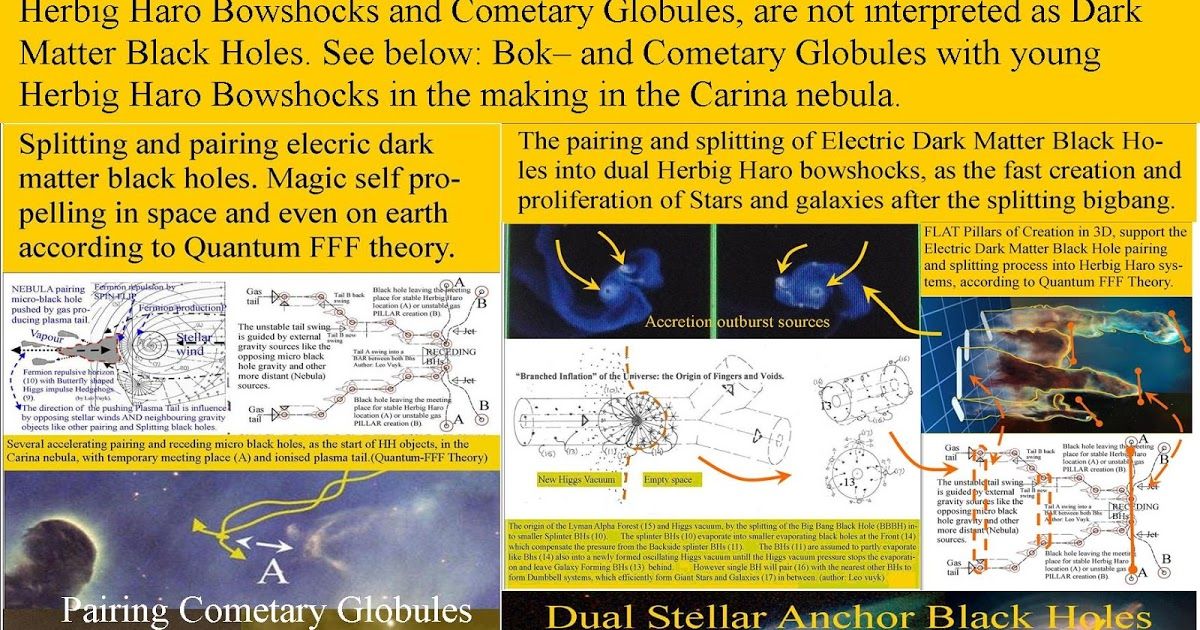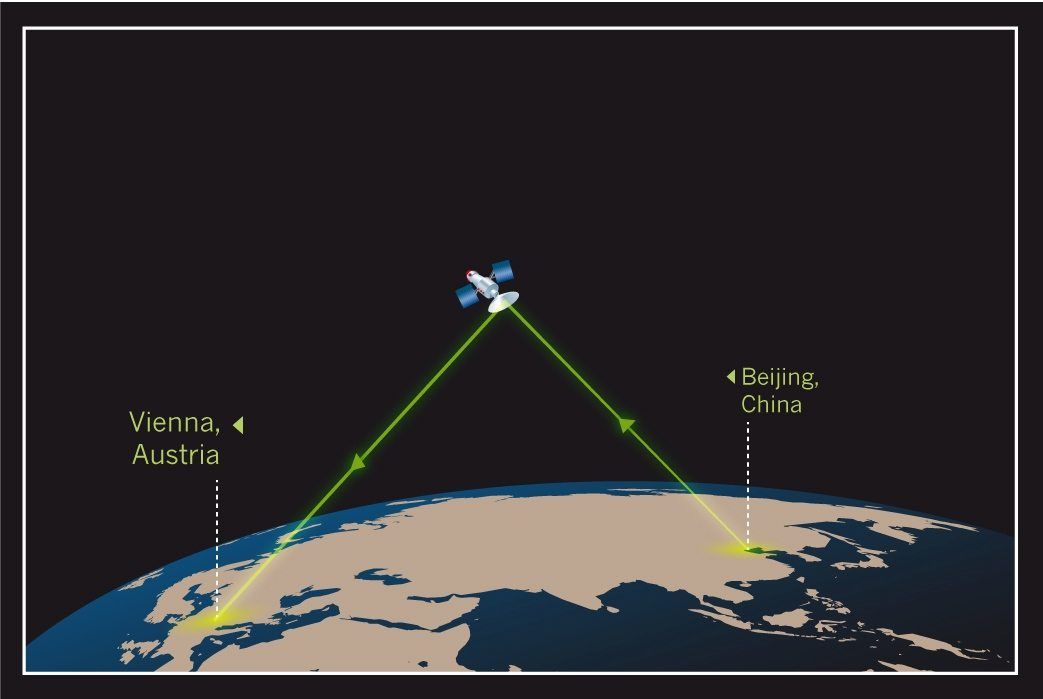Page 10933
Aug 24, 2016
The magic of the game changing electric dark matter black holes BH in the crowded centers of galaxies
Posted by Karen Hurst in categories: cosmology, quantum physics
New electric dark matter black holes seem to be game changers if concentrated in galaxy centers.
Game changing because BH crowded areas do not form linear Herbig Haro systems with star formation in between.
Result: Red and Dead galaxies as the start of the decline and big crunch.
Aug 24, 2016
Quantum Entanglement: Slower Than Light
Posted by Karen Hurst in categories: particle physics, quantum physics, space
Although this is true (speed of communication via entanglement is not at the speed of light); like other early stage technologies this will also evolve and improve in time.
China recently launched a satellite to test quantum entanglement in space. It’s an interesting experiment that could lead to “hack proof” satellite communication. It’s also led to a flurry of articles claiming that quantum entanglement allows particles to communicate faster than light. Several science bloggers have noted why this is wrong, but it’s worth emphasizing again. Quantum entanglement does not allow faster than light communication.
This particular misconception is grounded in the way quantum theory is typically popularized. Quantum objects can be both particles and waves, They have a wavefunction that describes the probability of certain outcomes, and when you measure the object it “collapses” into a particular particle state. Unfortunately this Copenhagen interpretation of quantum theory glosses over much of the subtlety of quantum behavior, so when it’s applied to entanglement it seems a bit contradictory.
Continue reading “Quantum Entanglement: Slower Than Light” »
Aug 24, 2016
Organic LEDs with low power consumption and long lifetimes
Posted by Karen Hurst in categories: energy, mobile phones, quantum physics
A novel device architecture is used to simultaneously achieve extremely high internal quantum efficiencies, low drive voltages, and long lifetimes, at practical luminance levels.

An LED with an emissive organic thin film sandwiched between the anode and cathode is known as an organic-LED (OLED). The emission mechanism of an OLED is superficially similar to that of a standard LED, i.e., holes and electrons are injected from the anode and cathode, respectively, and these carriers recombine to form excited states (excitons) that lead to light emission.1 In recent years, smartphones and TVs with OLED displays have rapidly become widespread because OLEDs provide high contrast, a wide color gamut, light weight, thinness, and flexibility for the displays. OLEDs also have great potential for the creation of new lighting applications.2 The high power consumption and short lifetime of OLEDs, however, remain key issues.
Continue reading “Organic LEDs with low power consumption and long lifetimes” »
Aug 24, 2016
Will superfast ‘quantum’ computers mean the end of unbreakable encryption?
Posted by Karen Hurst in categories: computing, encryption, quantum physics
Not worried today; but would worry in the next 5 yrs for sure.
A new type of computer means we’ll need a new way to make our data secure.
Aug 24, 2016
New single-photon microwave source developed
Posted by Karen Hurst in categories: computing, quantum physics
A collaboration including researchers at the National Physical Laboratory (NPL) has developed a tuneable, high-efficiency, single-photon microwave source. The technology has great potential for applications in quantum computing and quantum information technology, as well as in studying the fundamental reactions between light and matter in quantum circuits.
Circuits which produce single photons are a vital component in quantum computers. They usually consist of a quantum bit or ‘qubit’, coupled to a resonance circuit. The resonant circuit limits the photon output to specific frequencies depending on the design of the circuit.
Aug 24, 2016
ESO confirms the discovery of Earth’s closest potentially habitable neighbour
Posted by Klaus Baldauf in categories: physics, space

Astronomers have today confirmed the existence of a planet orbiting the sun’s nearest neighbour, Proxima Centauri, which has the potential to host liquid water, and therefore life.
The exoplanet in question, Proxima b, is thought to be the Earth’s closest potentially habitable neighbour, making this discovery a major landmark in humanity’s exploration of the universe.
Continue reading “ESO confirms the discovery of Earth’s closest potentially habitable neighbour” »
Aug 24, 2016
Steve Fuller’s Review of Homo Deus: A Brief History of Tomorrow by Yuval Noah Harari
Posted by Steve Fuller in categories: big data, bioengineering, biological, bionic, cyborgs, disruptive technology, energy, evolution, existential risks, futurism, homo sapiens, innovation, moore's law, neuroscience, philosophy, policy, posthumanism, robotics/AI, science, singularity, theory, transhumanism
My sociology of knowledge students read Yuval Harari’s bestselling first book, Sapiens, to think about the right frame of reference for understanding the overall trajectory of the human condition. Homo Deus follows the example of Sapiens, using contemporary events to launch into what nowadays is called ‘big history’ but has been also called ‘deep history’ and ‘long history’. Whatever you call it, the orientation sees the human condition as subject to multiple overlapping rhythms of change which generate the sorts of ‘events’ that are the stuff of history lessons. But Harari’s history is nothing like the version you half remember from school.
In school historical events were explained in terms more or less recognizable to the agents involved. In contrast, Harari reaches for accounts that scientifically update the idea of ‘perennial philosophy’. Aldous Huxley popularized this phrase in his quest to seek common patterns of thought in the great world religions which could be leveraged as a global ethic in the aftermath of the Second World War. Harari similarly leverages bits of genetics, ecology, neuroscience and cognitive science to advance a broadly evolutionary narrative. But unlike Darwin’s version, Harari’s points towards the incipient apotheosis of our species; hence, the book’s title.
This invariably means that events are treated as symptoms if not omens of the shape of things to come. Harari’s central thesis is that whereas in the past we cowered in the face of impersonal natural forces beyond our control, nowadays our biggest enemy is the one that faces us in the mirror, which may or may not be able within our control. Thus, the sort of deity into which we are evolving is one whose superhuman powers may well result in self-destruction. Harari’s attitude towards this prospect is one of slightly awestruck bemusement.
Here Harari equivocates where his predecessors dared to distinguish. Writing with the bracing clarity afforded by the Existentialist horizons of the Cold War, cybernetics founder Norbert Wiener declared that humanity’s survival depends on knowing whether what we don’t know is actually trying to hurt us. If so, then any apparent advance in knowledge will always be illusory. As for Harari, he does not seem to see humanity in some never-ending diabolical chess match against an implacable foe, as in The Seventh Seal. Instead he takes refuge in the so-called law of unintended consequences. So while the shape of our ignorance does indeed shift as our knowledge advances, it does so in ways that keep Harari at a comfortable distance from passing judgement on our long term prognosis.
Aug 24, 2016
25 Years Later After The Crash, Web and VR Are Finally Converging For Real — By Tony Parisi | UploadVR
Posted by Odette Bohr Dienel in category: virtual reality
“Twenty five years after the first consumer VR crash, virtual reality is poised to upend human-computer interaction, the Internet has disrupted every facet of life as we knew it back then, and the two are now on a collision course.”
Aug 24, 2016
An Interview with Kelsey Moody of Ichor Therapeutics, Bringing a SENS Therapy for Macular Degeneration to the Clinic
Posted by Steve Hill in categories: biotech/medical, life extension
Will Ichor Therapeutics be the first to clinic with a SENS based approach?
As I mentioned last week, earlier this year Fight Aging! invested a modest amount in the Ichor Therapeutics initiative to develop a treatment for macular degeneration, joining a number of other amateur and professional investors in helping to get this venture started. The approach taken here is based on the results of research carried out at the Methuselah Foundation and SENS Research Foundation over much of the past decade, funded by philanthropists and the support of our community of longevity science enthusiasts. This is how we succeed in building the future: medical science in the laboratory leads to medical development in startup companies, each new stage bringing treatments capable of repairing specific forms of age-related molecular damage that much closer to the clinic.
Ichor Therapeutics is one of a growing number of success stories to emerge from the SENS rejuvenation research community. Young scientists, advocates, and donors involved in earlier projects — years ago now — have gone on to build their own ventures, while retaining an interest in stepping up to do something meaningful to help bring an end to aging. Back in 2010, Kelsey Moody worked on the LysoSENS project to find ways to break down damaging metabolic waste in old tissues; fast-forward six years, and he is the now the CEO of a successful small biotechnology company with a great team, taking that very same technology and putting it to good use. I recently had the chance to ask Kelsey a few questions about the future of SENS rejuvenation research, as well as how the Ichor scientists intend to construct a new class of therapy for macular degeneration, one based on removing one of the root causes of the condition.















